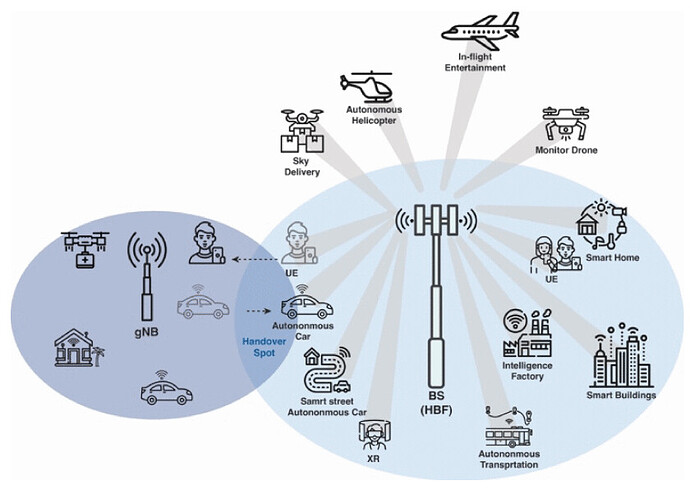Seamless handover (HO) management is crucial for mobile networks, ensuring uninterrupted connectivity as smartphone users move between various 5G mobile towers. With the advent of Fifth-Generation (5G) and Beyond (B5G) systems, HO optimization has become increasingly vital.
Our latest study, published in IEEE IEEE Access delves into the challenges and solutions of HO optimization in B5G networks. The article covered emerging wireless technologies, including non-terrestrial networks to ultra-low latency, massive device density, to cutting-edge technologies, such as mmWave and THz communication.
Abstract:
Handover (HO) management is essential in mobile cellular networks. It ensures seamless connectivity to the User Equipment (UE) while moving from one Base Station (BS) to another within the coverage area.
HO optimization refers to the adoption of intelligent and automatic HO techniques in mobile networks.
HO optimization is gaining more importance in Fifth-Generation (5G) and Beyond (B5G) systems because of the requirements and specifications that B5G targets.
The requirements of B5G include global connectivity, ultra-low latency, big data analytics, extreme data rate transmissions, a massive number of devices in a small area, and new technologies that will support the B5G network, such as Millimeter Wave (mmWave), Terahertz (THz) communication, and Ultra-Dense Networks (UDNs). All these factors cause new HO optimization challenges and require new solutions for HO optimization techniques.
This study comprehensively provides HO optimization challenges and solutions in B5G.
First, it provides a research background and explanation of HO in legacy.
It then investigates the HO optimization challenges in B5G, including future research directions.
The paper then discusses the most prominent and recent techniques and technological solutions for HO optimization management in B5G.
Finally, we highlight potential techniques for HO optimization in B5G.
Read the Paper: ![]()
